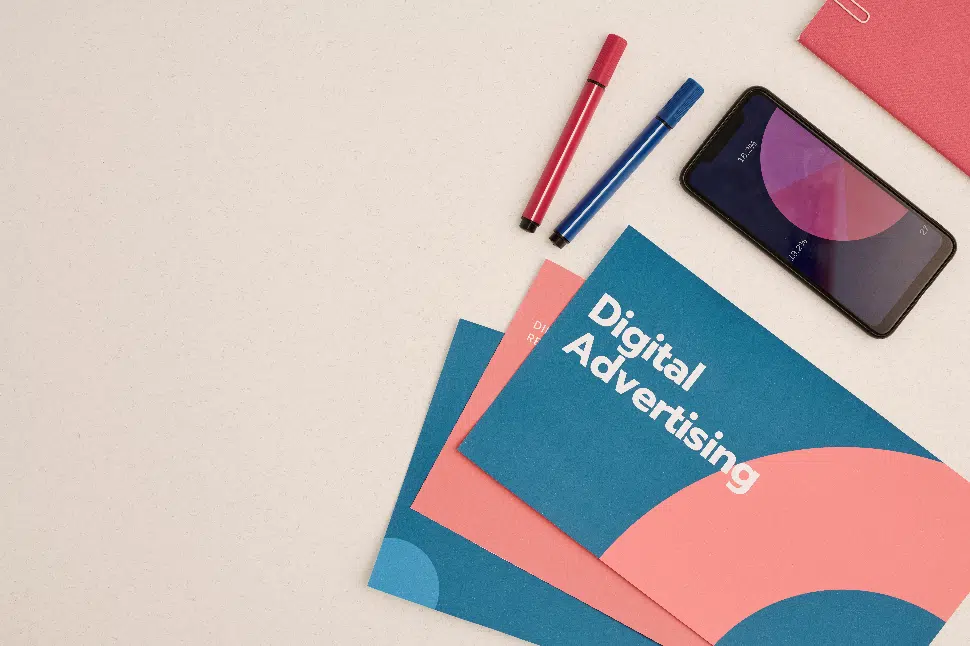If you’ve been following the blog these last few weeks, you know all about paid ads. We’ve looked at the process of planning, budgeting, and creating a digital marketing plan that works for you. But during the campaign and at the end, it’s essential that you take time for analytics. Every business owner needs to see how effective your ads were compared to your budget. Today, we’ll turn our attention to evaluating paid ads to ensure better results.
Download our FREE Paid Ads Checklist
Media KPIs
Your media KPIs (Key Performance Indicators) are reports you can run to show the impact of the initial ads. These are the ads that introduce the consumer to your product. Throughout the ad campaign, and at the end, you need to consider the goals you want to reach. This is what we talked about in the blog on budgeting strategies for your paid ads. If your ad isn’t meeting those goals, take time to consider the reasons and acknowledge where there might be a hiccup in the process. These are a few of the KPIs that you will want to note for the initial ads.
CPM – Cost per thousand impressions
For digital marketing, the CPM (Cost per thousand impressions) is important. It’s a measure of how much the ad is costing you to reach a thousand consumers. This doesn’t mean that each of those consumers has actually noticed the ad, but it was somewhere in their feed. Maybe they stopped to notice it, or they could have scrolled past. But knowing how much it costs to get a thousand impressions is important. You can determine whether or not you got the return on that investment. You can make sure you had enough leads–and eventual conversions–to more than cover that cost.
CPV – Cost per view
A cost-per-view analysis is generally in relation to video marketing. Have you decided to create a paid ad commercial that plays for YouTube videos? How much did it cost you for each person who saw the ad? To get the cost per view, you divide the amount you spent for the campaign by the number of people who watched the ad.
CTR – click-through rate
Your click-through rate is another metric to track. The CTR is a measure of the number of times users took action by visiting your webpage. These are the people who click the link on your paid ad and go to your website. To find the CTR, divide the number of clicks made by the corresponding impressions. With click-through rate, it is the number of people who click on the ads who take action.
CPC- cost per click
The CPC shows how much you paid for a click. To find this number, divide how much you spent on the ad by the number of people who clicked the ad. Google uses this data to measure your ad performance.
CPL – cost per lead
The cost per lead demonstrates how many leads you gained as a result of the ad impressions. Out of the people who had an impression of your ad, how many of them came to your page and became a lead? How many signed up for your email list? How many submitted a request for more information? You can do the math to see how much it cost in ad spending to drive leads to your landing page.
CPA – cost per acquisition
The cost per acquisition is the amount you spend on a lead divided by the net revenue you make from the lead. Use this number to figure out the ROI (return on investment) you’re getting for each lead you generate. If you can prove that you’re acquiring leads at a low cost, that’s money in the bank for your business.
CPO – cost per order
The CPO is the average cost for any customer to buy any product. It’s an overall number based on the total amount you spend on ads and labor to make a sale. This is a number calculated over time when you have plenty of data to analyze.
ROAS – return on ad spend
The return on ad spend shows how much you make versus how much you have spent. It’s essentially the return on your ad investment. As mentioned in the ad budgeting post, you should aim for a ratio of 4:1. In other words, for every $1 you spend in ads, you should expect $4 in returns. Did your ad perform as expected? Evaluating this metric will give you significant clarity on the impact of your ads.
Offer KPIs
Like your Media KPIs, your offer KPIs should have your focus to determine whether or not the campaign was effective. The difference is that these indicators move down the funnel at the next stages after the client has seen your initial ad. These take place from the engagement phase and moving forward.
Are you having a positive response once they engage with your brand? Are they converting and becoming customers? Or are you losing them along the way and having to work harder on your retargeting campaigns?
Analyzing these indicators will let you know what you might need to improve for the next steps in the process to increase ROI.

Bounce Rate
The bounce rate is the percentage of users who land on your site who then navigate away before reading your content. If you look at it in the context of advertising, it’s the amount of traffic that did not see any brand messages. The lower the bounce rate, the more people are interested in what you have to say, and the more your branding is paying off. Whether it’s Facebook, LinkedIn, or Google Ads, it’s important to monitor performance at this stage. Tracking and measuring the KPIs of your advertisements are crucial in helping your business grow and thrive.
Page Load Time
Your page load time is often a neglected aspect of running a business. Unfortunately, this is a primary element of gaining conversions. This is the time it takes for content to display on a web page. If your webpage takes a mere 5 seconds to load, many people will leave without reading your site. Ideally, your page load time should be under two seconds; anything above that will scare off your visitors. This is where you need to optimize your content, URLs, images, and CSS. Optimizing these factors will guarantee your site loads quickly. In today’s world, the need to track, understand, and diagnose performance issues is more important than ever.
Conversion Rate
The conversion rate is one of the most important numbers to track once you’ve actually gotten to the bottom of funnel. You see how all of your processes are working together. Conversion rates judge an overall impact from the first introduction to the client through your paid ad. Your business can use this metric to judge the ratio of consumers who see your ad versus those who make a purchase. If your conversion rates are low, you can go through all the previous metrics to find the holes and plug them. If your conversion rates are high, you can be sure that you are on the right track.
LTV – Lifetime Customer Value
Finally, LTV is the amount of revenue that you would receive from a customer over time. It’s a way of calculating how much you can expect to make using your CPA model. This isn’t something that you can calculate using any of the Google tools; you really need a calculator. Remember, you’re not trying to get someone to buy now, you’re trying to get them to buy over the long term. It’s far less expensive to retain a customer than to gain a new one. That’s why it’s important to judge your success in being a company your customers trust. Building a relationship and providing good service is key to bringing them back–and ensuring they bring others with them.
Putting it all Together
When you look at all of these Key Performance Indicators, what does it tell you about your marketing campaign and overall strategy? Have you met your goals? Or do you see the need to more clearly define those goals to begin with?
When you notice areas that need improvement, take the time to get to the bottom of it. Was your design lacking? Did you discover that more of your target audience uses Instagram than Facebook? Or was the problem further down the funnel, and you discovered that your page load time was a significant factor in preventing conversions?
At Planify, we help business owners improve these numbers and understand them better. Whether you want to hire an agency or do it yourself, we hope that these tools will improve your paid ads strategy. It’s time for your business to thrive.


1 thought on “Evaluating Paid Ads to Ensure Better Results”
Great insights! Tracking and analyzing paid ad performance is crucial for any digital marketing agency to ensure the best ROI. Metrics like CPM, CPV, and CTR help fine-tune strategies and improve future campaigns.